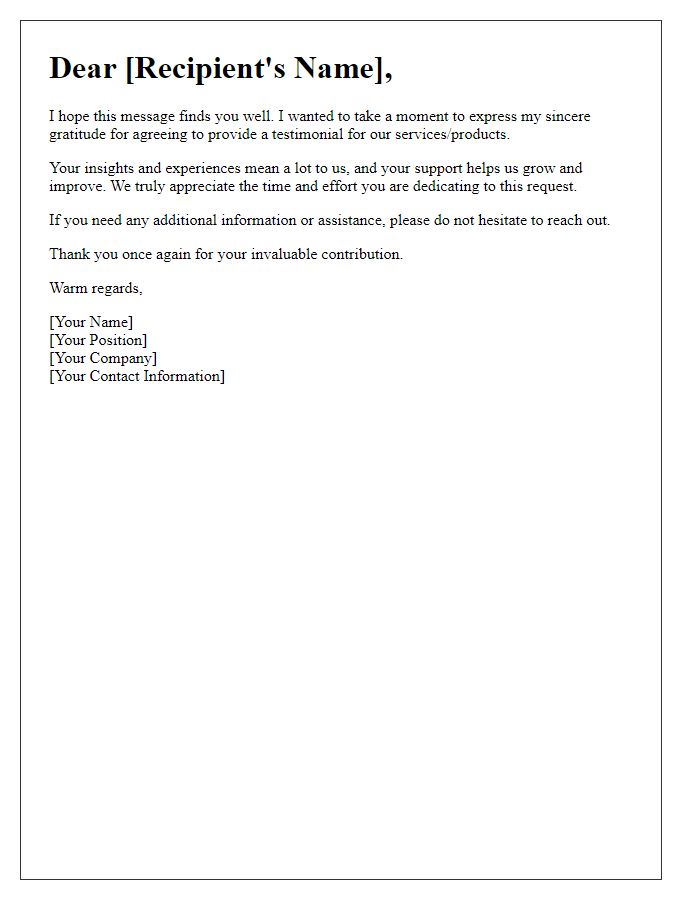Looking to gather some heartfelt testimonials that showcase the impact of our work? A personalized letter template can make the process smoother and more engaging for your clients. By inviting them to share their experiences in their own words, you not only strengthen your relationship but also enrich your community's story. Ready to discover how to craft the perfect request? Keep reading to learn more!

Personalization and Addressing
A testimonial request drive focuses on gathering valuable feedback from clients or customers. An effective strategy involves personalizing outreach efforts to ensure recipients feel valued and addressed. To achieve personalization, consider using the recipient's name, referencing specific interactions or experiences, and identifying the unique qualities of service or product provided. Addressing the request clearly highlights the purpose of the testimonial, emphasizing how their feedback plays a vital role in improving services and fostering community. Including a brief explanation of how long the testimonial should be and any particular points to cover can guide respondents, enhancing the quality of returned testimonials. Recipients should also feel encouraged to share their stories, making the request more engaging and meaningful.
Clear Purpose and Intent
A testimonial request drive aims to gather authentic feedback on products or services, enhancing credibility and trust. This initiative encourages customers to share genuine experiences, highlighting satisfaction levels and key features that stood out. Engaging with customers through this initiative fosters a sense of community and appreciation, potentially increasing customer loyalty. Collecting testimonials can be facilitated through online platforms, utilizing forms or social media, ensuring the process is user-friendly. Displaying testimonials prominently on websites (for example, on product pages or landing pages) bolsters brand reputation, influencing potential customers in their decision-making process.
Call-to-Action (CTA)
Testimonials serve as valuable endorsements for businesses, offering social proof and building credibility. Crafting a compelling call-to-action (CTA) is essential for encouraging customers to provide feedback. For example, reaching out to previous clients via email can significantly increase response rates. Aiming for a specific timeframe, such as two weeks post-purchase, allows businesses to gather fresh insights while the experience is still vivid. Incorporating platforms such as Google Reviews or Yelp can streamline the process, ensuring a wider audience sees the testimonials. Additionally, highlighting the impact of their feedback on future customers fosters a sense of community and engagement.
Simplified Testimonial Guidelines
In the realm of customer feedback, simplified testimonial guidelines can foster engagement and encourage clients to share their experiences. An effective request for testimonials should clarify expectations and enhance communication flow. Key elements to include are specific aspects of the service or product clients should focus on, such as quality, usability, or customer support. Provide examples of desired feedback, like "What surprised you most about our service?" or "How has our product improved your daily tasks?" Additionally, set a clear deadline for submissions to maintain project timelines and ensure testimonials are collected in a structured manner. Make the process user-friendly by offering various submission methods, including email, online forms, or social media platforms, to accommodate diverse client preferences.
Appreciation and Gratitude
Requesting testimonials can enhance a brand's credibility and attract new clients. Gathering testimonials from satisfied customers, especially in a service-based industry, emphasizes appreciation and gratitude toward their positive experiences. A dedicated campaign can be launched via email or social media, encouraging happy clients to share their experiences. Specific prompts can guide them in detailing how the service impacted their lives or businesses. Placing focus on personal anecdotes, transformative outcomes, or standout interactions boosts authenticity and relatability. Incentives, such as discounts or raffle entries, can motivate participation, creating a sense of community while expressing gratitude for customer loyalty.
















Comments